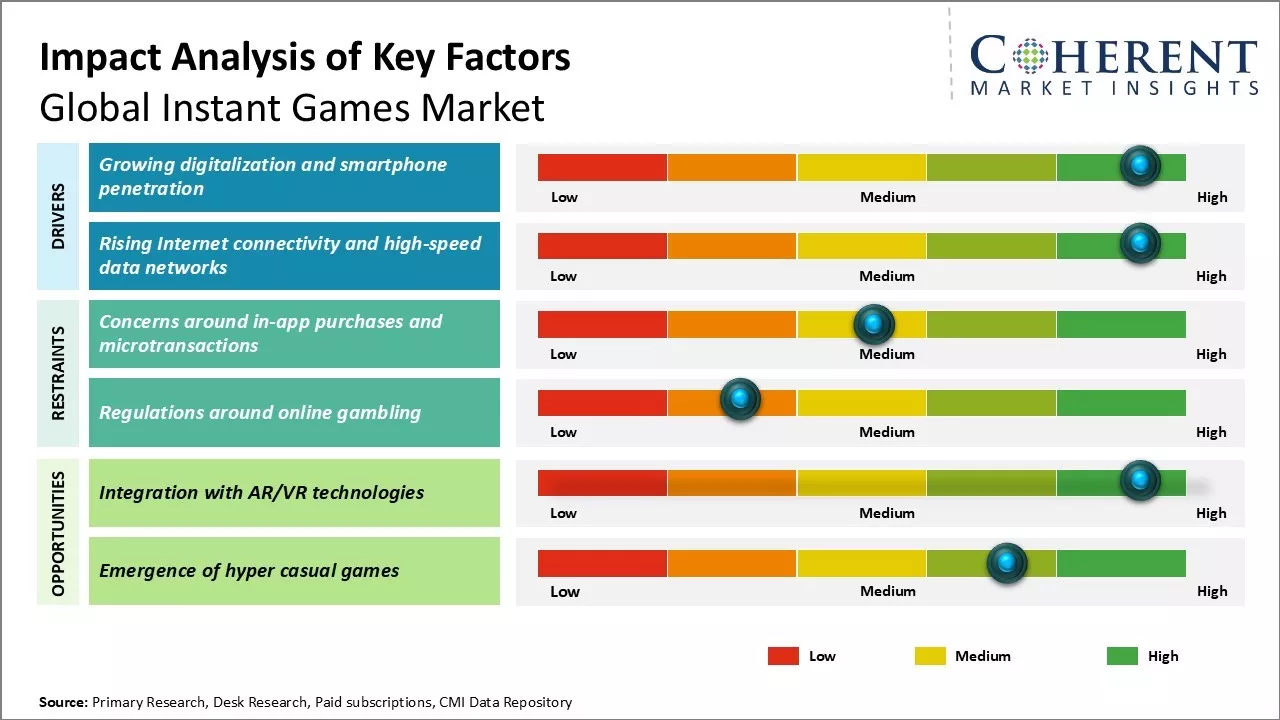The Global Instant Games Market is estimated to be valued at US$ 3.10 Bn in 2025 and is expected to reach US$ 7.58 Bn by 2032, exhibiting a compound annual growth rate (CAGR) of 13.6% from 2025 to 2032.

To learn more about this report, Request sample copy
The instant games market is witnessing high growth owing to the increasing popularity of casual games among consumers. Social media and online gaming platforms have made instant games easily accessible to a wider audience and their engaging formats are highly shared online, which is driving the market's trend upwards. The availability of instant games on virtual gaming platforms removed limitations of time and location, boosting players' engagement with these short-format games. Introduction of innovative game formats, attractive themes and improvements in gameplay mechanics by manufacturers have also augmented the demand over the years.
Growing digitalization and smartphone penetration
This widespread digital transformation has tremendously benefitted the online gaming industry. The always-connected nature of smartphones combined with their localization and processing capabilities have made them ideal platforms for digital games. Mobile gaming was one of the earliest to move online and has now become the dominant platform for casual as well as hardcore gaming worldwide. The ubiquitous availability of high-speed internet and presence of over 2 billion smartphone users globally have opened up a massive untapped market for online and mobile games. Many millennials and Gen Z consumers now instinctively reach for their phones to enjoy short play sessions to kill time. The convenience of being able to instantly access a wide variety of casual games from any place has driven immense popularity of mobile gaming.
Instant matchmaking capabilities have further elevated the appeal of digital games for on-the-go consumption. Being able to quickly get into a multiplayer game match against a random online opponent without any friction greatly enhances the gameplay experience on mobile. Consumers today demand hyper-personalized and frictionless digital experiences, which has benefitted instant games tremendously.
Joining thousands of companies around the world committed to making the Excellent Business Solutions.
View All Our Clients